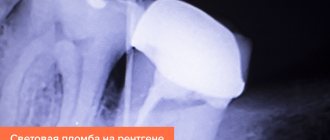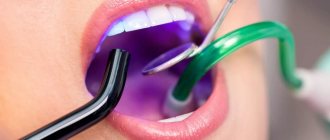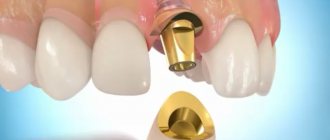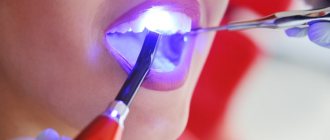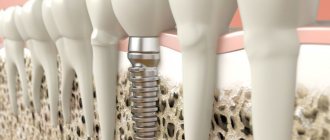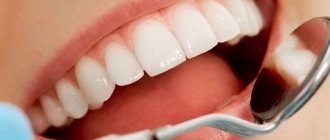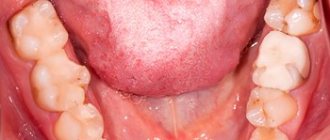In modern dentistry, when treating caries at different stages, doctors often install light fillings. This is explained by the advantages of photopolymer composite material compared to the traditional composition. The light filling looks natural (often the color does not differ from tooth enamel), is resistant to stress, and less toxic. In addition, its installation is easy and does not take much time.
To maintain the results obtained by the dentist, you must follow several recommendations. And then the material will not peel off and collapse.
Many patients are interested in the question of how long they should not eat or drink after the doctor fills a tooth with composite material. And in general, are there any restrictions? Now we will tell you everything in detail.
What is a light seal?
The photopolymer composite material that the dentist uses consists of a mixture of resins, silanes and filler.
It hardens when exposed to ultraviolet radiation, so when filling a tooth, the doctor uses a special lamp that creates waves with a length of 450 Nm in the blue spectrum. For a high-quality result, he applies the composite material layer by layer, exposing each layer to light. At this stage, primary polymerization occurs. Then, within 24 hours, the chemical bonds stabilize and the filling finally hardens. In this regard, the doctor gives certain recommendations, compliance with which guarantees the durability of the material - the filling lasts 5 years or more.
Composition of a temporary filling and its care
The temporary filling is harmless to the body because it consists of dental cement. You cannot wear such a structure all the time, as this can lead to further development of the disease and even complete tooth destruction.
The material for creating a temporary filling includes two main substances:
- Eugenol . It has a specific smell, somewhat reminiscent of cloves. It is highly valued in dentistry due to its sedative properties.
- Zinc Oxide Powder . Its properties depend on the substances with which it will be mixed. Used in filling solution to make eugenol more durable. When mixing the materials, it is possible to obtain a fairly solid solution, although at first it has a soft and brittle texture.
A temporary dental filling, unlike a permanent one, quickly wears out and falls out, so it needs to be used carefully. First of all, it is recommended not to eat for two hours after visiting the dental office. It would be a good idea to generally avoid eating hard and sticky foods during dental treatment. When brushing your teeth, you should try not to touch the area with the filling, so as not to seriously damage it.
Advantages of photopolymer material
This differs from other types of composite materials:
- The ability to control the hardening process. The doctor fills the tooth without haste, applying layers of material as carefully as possible. The composition is plastic, hardens only when exposed to an ultraviolet lamp.
- Safety for the patient's health. Photopolymer material is characterized by low toxicity, so it is used even in pediatric dentistry.
- The ability to create a filling of the desired shade. She won't stand out.
- Durability. It is due to good adhesion to hard tissues. Typically, the service life of a photopolymer filling is at least 5 years. With careful handling and high-quality teeth cleaning, its service life increases.
- Ease of finishing. The composite can be polished well, so the filling does not create discomfort - it will not scratch the mucous membrane of the tongue and cheeks.
An experienced dentist can easily give the crown the desired shape, so the filled tooth looks natural.
Composite
Today, the physical properties of new filling powders have changed. They are successfully used in cases where deep caries has led to the appearance of large abnormal cavities. Composites fully meet modern standards.
- They have excellent cosmetic and practical characteristics.
- They are suitable for reconstruction of frontal, masticatory units.
- They are installed for children and expectant mothers.
- The material hardens directly in the dentist's office. He exposes the pad to a lamp with ultraviolet rays.
- The substance can be easily given the desired shape.
After the light filling, you can drink water and eat after the sensitivity of the receptors returns. Indeed, with numbness of the lips, tongue, and palate, it is easy to cause mechanical and thermal damage to these areas. Therefore, in this situation, it is advisable to eat no earlier than an hour later, especially if a composition with epoxy resins was used. It is better not to consume drinks and foods such as beets, wine, tea, blueberries, coffee for 24 hours. Also, you should not smoke during the day, as nicotine slows down wound healing. If you follow your doctor's recommendations, this will minimize the risk of the pad falling out or becoming deformed.
Types of light seals
The dentist chooses a photopolymer material depending on the location of the tooth and the task at hand - will it be caries therapy or the elimination of a non-carious defect on a unit.
There are 3 types of material:
- consisting of large particles - preferable for chewing molars, such a filling will be resistant to abrasion;
- consisting of microparticles - relevant in the case of treating caries on the front teeth and restoring the aesthetics of the units;
- nanocomposite - durable, reliable, aesthetic, but has a higher cost.
Before deciding to install a light filling, the doctor will definitely evaluate the location of the caries. If the lesion is in a hard-to-reach place, you will have to choose another material due to the impossibility of high-quality polymerization.
Why does a tooth or gum hurt after filling and how to get rid of the pain
When treating caries and installing a filling, the dentist uses a drill and penetrates the tooth tissue. In this case, the tooth is exposed to increased temperature resulting from friction. This phenomenon is reduced when using modern water-cooled dental machines, however, in the first days the tooth hurts after filling and this is normal if the pain goes away. If the pain worsens, you should consult a doctor again.
In some cases, treatment of caries involves action on the gum tissue, or in the vicinity of it. Also, when administering an anesthetic, the anesthesiologist inserts a needle into the gum, which can lead to pain after the drug wears off. If pain in the gums after filling does not go away for a long time, you should visit your doctor for an examination and find out the causes of the pain.
Another cause of discomfort may be discomfort caused by a mismatch in the size of the filling. This is expressed in the fact that the filling protrudes above the surface of the tooth and prevents the jaws from closing fully. After completing the procedure, you must carefully check for the presence of this defect by moving your jaws in different directions using a special staining pad.
If a tooth hurts under a filling, the color of the tooth around the filling changes, or increased sensitivity persists for a long time, an immediate visit to the clinic is necessary.
When can a light seal be placed?
The photopolymer composition is considered universal, therefore it is widely used in dentistry. There are a large number of pathologies for which the dentist prefers this composite, including:
- caries;
- erosion and necrosis of enamel;
- fluorosis;
- wedge-shaped defect;
- pulpitis and periodontitis (light filling is placed at the final stage of disease treatment);
- dental injuries and chipped enamel;
- pathological abrasion of units (a photopolymer filling is installed for temporary restoration of the tubercles).
In addition, the dentist uses this filling material to give the stump the required size and shape before prosthetics with fixed dentures. Thanks to a wide palette of shades and good strength after hardening, the photopolymer composition is suitable for any units in the series; it is also chosen for aesthetic restoration.
Types of temporary fillings
You cannot do without a temporary filling in the following cases:
- For conservative treatment of not too advanced pulpitis and advanced caries. After drilling out the inflammatory focus and treating the root canals, the tooth cavity is filled with anti-inflammatory drugs, and a filling is placed on top. This is necessary so that the drug does not leak out and that microbes and pieces of food do not get into the diseased tooth.
- For diagnosis in deep caries, when it is unclear whether the nerve is affected. They put a filling with medicine and watch the tooth - if it continues to hurt, most likely it is pulpitis.
- In the treatment of pulpitis, if there is a need to remove the nerve. Then the treatment is carried out in 2 steps: first, a filling is placed with arsenic or other, more gentle devitalizing drugs, and after the death of the nerve, treatment is carried out.
- For prosthetics and restoration to protect teeth while permanent structures are being made.
Installing a temporary filling is absolutely safe, except in cases where individual allergic reactions to filling materials are observed.
How is the filling installed?
First, the doctor prepares the tooth for restoration - removes pathological tissue and forms a cavity, removing softened dentin and enamel. This ensures the durability of the filling. If the tooth is severely damaged, the dentist removes the nerve, installs a pin, and only then proceeds to filling the canals and forming a crown.
Before starting work with photopolymer material, he etches the cavity with acid to clean the walls of sawdust and other foreign particles formed during drilling of the affected tissue. This manipulation helps to open the dentinal tubules, which improve the fixation of the filling.
After this, the doctor applies an adhesive material, which acts as a connecting link between the tooth and the photopolymer composition. After illuminating it, the doctor applies the filling material in small portions in layers, carefully pressing it to the bottom and walls of the cavity. Each layer is exposed to ultraviolet light. When the dentist completes the modeling, he grinds and polishes the surface of the filling.
Cement
This substance is rarely used these days.
- Firstly, it looks unnatural and unattractive.
- He has increased fragility
- It quickly crumbles, cracks, and wears off.
But sometimes the dentist makes just such a decision. Then, after installing the filling, you should refrain from eating for at least 2-3 hours. At first, the patient should eat foods with a soft, delicate texture. When using a glass ionomer composition with fluorine, soft and liquid products can be taken after 60-70 minutes, since the substance is resistant to humidity. As you can see, the time of abstaining from food will depend on the type of filling substance.
To eat or not to eat: what recommendations does the doctor give?
After installing the light seal, you can eat and drink immediately. This is its significant advantage over a cement filling. But in cases where dental procedures were performed under local anesthesia, the doctor recommends refraining from eating for 1-2 hours. This is due to the fact that due to decreased sensitivity, the patient may injure the mucous membrane of the tongue or cheeks while chewing food. The damage will cause discomfort.
Since the material will finally harden after 24 hours, you should avoid hard foods (nuts, apples, etc.). It is better to give preference to soft food. On the first day after filling, it is advisable to quit smoking. This is due to the fact that the material may turn yellow and the healing of tissues that have been exposed to dental treatment may deteriorate.
To maintain the aesthetic appearance of the filling, for 2-3 days you should not consume foods and drinks that can stain the photopolymer material. Among them:
- coffee;
- red wine;
- pomegranate, cherry and other freshly squeezed juices;
- carrot;
- beets (including as part of first courses, salads, etc.);
- blueberry;
- chocolate;
- carbonated drinks containing dyes.
You should drink natural juices with caution, even if, in your opinion, they will not stain the filling (it is better to use a straw), strong black tea, and eat strawberries and cherries. It is worth limiting the amount of sweet and starchy foods in your diet. It is advisable to avoid the consumption of cold and hot foods, as well as their simultaneous intake. Temperature contrast can negatively affect both the filling itself and the tooth tissues.
Let us draw your attention to one nuance: some dentists still advise refraining from eating for 2 hours and drinking drinks for an hour in order to reduce the risk of complications after filling a unit.
Potential problems
Problems that may arise after installing a temporary filling:
- Tolerable and not too severe toothache after filling is caused by several reasons: infection, the actual surgical intervention and incompletely killed pulp. But, if the pain is very severe, this may mean that the nerve is inflamed, periodontitis or pulpitis is developing, a cyst has formed, or there is an allergy to filling materials. In this case, only visiting a dentist will help.
- If the filling crumbles badly or falls out, you need to urgently run to the doctor, otherwise an infection will penetrate into the affected tooth and treatment will have to be started in the second round.
- Some antiseptic and medicinal preparations used in the treatment of dental canals have a distinct, specific taste. Therefore, a medicinal taste in the mouth for several days after filling is quite normal, albeit unpleasant. You can beat it off (or soften it) by rinsing. But, if the taste is very persistent, this may mean that the filling is cracked, and then you will still have to go to the doctor.
If the filling darkens, bad breath appears, the gums above (under) the affected tooth turn red or fester, you should also rush to the dentist.
Can you tell me more about care?
Well, what would we do without it? This is the most important thing for you. A temporary filling is not so strong, so there are some precautions here. In the first days, it is recommended to carefully monitor your oral cavity:
- You cannot chew seeds, nuts, or eat any other solid food.
- Throw away viscous products (chewing gum, toffee, etc.)
- Oral care is thorough but also careful
- Soft bristle brush, toothpaste – no whitening particles
- Rinse after every meal
Well, that's all I wanted to tell you today. If you still have questions, I will be happy to share the answers. And also do not forget that you can always clarify all the points with your dentist. It is also important for him that you follow all his recommendations.
